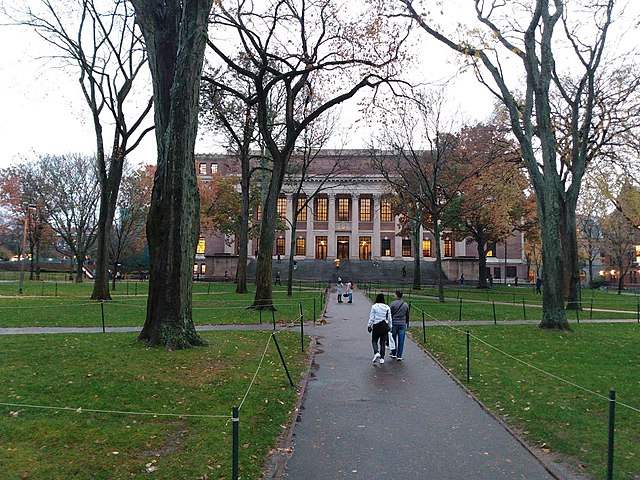What American universities can learn from Europe
Photo used with permission from Wiki Commons
Students and visitors walk along paths at Harvard University.
The United States is often credited to be the nation with the best universities in the world, with European nations ranking second. Despite the aura of superiority the United States bears, American universities could certainly learn a thing or six from Europe.
Harvard, Princeton, Yale: Education’s holy grail is said to lie within these prestigious universities. Students from all over the world move overseas to gain the education offered in the US. Multiple sources rank American universities as the best in the world due to the quality in-depth curriculum, and ability to concentrate resources.
However, what comes with this “superior” education is an expensive tuition. Every year, American universities churn out students of excellent caliber, but drowning in years of student debt. For tuition only, Yale costs $59,950, while international tuition in the University of Cambridge costs $28,227. For the University of Amsterdam (with an acceptance rate of 4%), tuition is $13,300. In other nations such as Germany, college is cost-free.
Yes, there is an abundance of financial aid options available for students who may need it in the United States. But, the middle class (51% of the population) find themselves stuck in the middle of low income and high income families. According to Accredited Schools Online, this is why, “middle class students enroll in college at a lower rate.”
Thanks to Europe’s low to no tuition costs, financial aid is not as pressing. However, there are still many European universities that accept FAFSA loans. Study.edu says that out of 750 universities abroad that accept FAFSA loans, 600 are in Europe. Additionally, European countries offer public funding to all, including international students.
For students who have a clear idea on what they want to study, Europe is perfect in that it offers a number of in-depth, job-oriented experiences. While the United States’ holistic approach to education is helpful for students who are exploring their options, European universities will help students to gain a competitive edge and be better prepared for the workforce.
Additionally, most internships in Europe are paid. Go Overseas credits England as one of the best countries for interns. In the UK, Interns can earn anywhere from 1000 to 2000 euros, which can further help cost of living and tuition.
Although there’s a lack of campus housing, there’s no need to fret: public transportation systems in Europe are expensive. Students will be able to take advantage of this affordable transportation to their classes. The United States only has a few buses and trains available for students.
Furthermore of course, students will be able to experience European culture. Each and every nation in Europe is full of life: medieval architecture, cosmopolitan fashion, exquisite cuisine, the very birthplace of theater. These societal gifts are at students’ fingertips.
Though the American education system is notable, students shouldn’t have to spend $400,000 to study at their dream school. Students should, therefore, take this into account and consider European universities before sending out their applications.
Your donation will support the student journalists of Thomas S. Wootton High School. Your contribution will allow us to purchase equipment and cover our annual website hosting costs.










